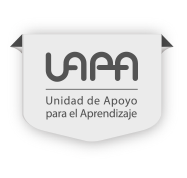Content
The imperative
Now let's see how to use imperatives.
Click on each concept to read the information.
Affirmative imperative
"Close the door, Ana. There's a lot of noise outside".
Stand up
Turn off your cell phone
Be quiet.
Close the door is an imperative sentence. The sentence means, "Ana, I want you to close the door. I am telling you to close the door."
An imperative sentence uses the simple form of a verb: stand, pay, be, etc.)
Negative imperative
Don't eat in class.
Don't play with your cell phones.
Don't be late.
A negative imperative uses don't + the simple form of a verb (eat, play, be, etc.)
We use imperatives to give orders, directions and to make requests. To sound more polite, you can add the word please at the end or at the beginning of the sentence.
Stop talking
Go to page 65.
Open the window, please.
Please show me your homework.
Now that you have studied when and how to use the imperative, it is time to practice it. Do the reading, writing, listening and speaking activities that follow.




